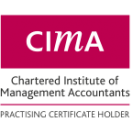
Customers’ Profitability Analysis
This topic is part of the Management Accounting Services suite that combine accounting, finance and management practices with leading edge techniques of analysis in order to drive businesses successfully. Our approach facilitates the in-depth understanding and the influence of the business strategy execution in order to identify new opportunities to improve both short-term performance and long-term competitiveness.
Management Accounting in Practice
The approaches and tools provided within our services address operational, managerial and strategic needs of an organization and can be used independently or in combination based on specific business requirements. Our management accounting services deliver a practical framework that enables the development of performance indicators that focus on core processes, activities and value drivers of a business, as well as the identification of new opportunities to sustain long-term competitiveness and to increase overall profitability.
Expertise and Tools
Our tools and practices add value to planning and strategic/operational decision-making processes through employing a cost/ benefit approach, giving full consideration and aiming to answer to the following questions:
- Product and service profitability: What profits/losses are being made by individual products? What is the breakeven point sales and volume for a product?
- Customer profitability: Why some customers or groups are worth more than others?
- Total cost management: What are the cost drivers and elements that add value to end customers?
- Competitor’s costs: What are the company’s sources of competitive advantage vs. competitors?
- Budget and forecast process – Sensitivity analysis: How are different scenarios used within budgeting/forecasting process? What are the criteria for choosing the optimal scenario to be applied in a certain business context? What is an integrated resources allocation model?
- Integrated management reporting and Budget control: What is the current performance of the company versus the budgeted one? Where are the pitfalls and why is important to understand them and take corrective actions?
- Funding for business growth or turnaround: What are the sources of funding available to the company in order to pursue its growth or turnaround strategy? What is the optimal level of gearing for a company in order to avoid debt overburden?
- Working capital management: What are the key elements to improve company’s cash cycle? How the Operational Cashflow and EBITDA indicators can be improved?
- Capital requirements and Investment decisions: What is the optimal Debt to Equity proportion for a company, ROE? How are employed real-options scenario, ROI and Pay-back criteria for a company’s investments?
- Risks heat map: What is the set of financial indicators that help preventing and diminishing the risks of liquidity, debt overburden and profitability for a company?
Benefits and Value of Our Services
The immediate outcomes of implementing and using adequate management accounting tools are represented by:
- Improved profitability and effective resource allocation;
- Increased competitive response and adaptability to changes in the business environment; Creation of best practices for operational excellence;
- Diminished operational risks through optimal managerial control and pro-active correction actions.
What tools and practices do you use in your company in order to increase your profit and prevent financial risks?
Do you want to learn more about the benefits we can bring to your organization?
Please contact us at: 021 3228352 / office@rosscon.ro / www.rosscon.ro.
